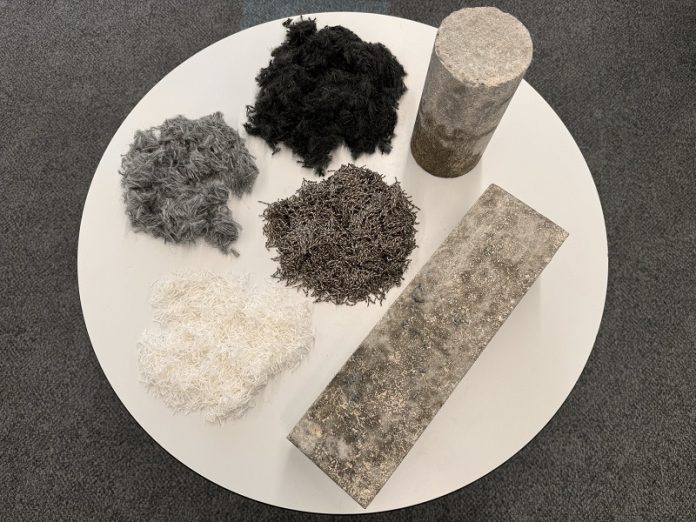
Australian engineers have discovered a new way to make concrete stronger and more resistant to cracking by using old carpet fibers, bringing a fresh approach to sustainability in construction.
Led by Dr. Chamila Gunasekara at RMIT University, the research team developed a method that uses waste carpet fibers to reduce early cracks in concrete by up to 30% while enhancing its durability.
Cracks in concrete, especially when it’s newly poured, are a big problem in construction projects, costing around A$8 billion each year in repairs across Australia, and even more in the U.S. with annual expenses of $76 billion.
In their recent study, published in Construction and Building Materials, the team showed how recycled carpet fibers could make concrete not only more sustainable but also tougher.
Using carpet waste and other discarded textiles like clothing fabrics, they created concrete samples that were up to 40% stronger in tension, meaning they could better handle stretching forces.
This added strength helps prevent early cracks caused by shrinkage as the concrete dries, which is a common problem that can weaken buildings over time.
“Our new technique, using scrap carpet fibers, addresses a major issue in construction—early cracks that lead to corrosion and can affect the safety and appearance of structures,” said Dr. Gunasekara.
The project isn’t just about construction—it also aims to tackle the growing waste problem caused by discarded textiles.
Australia ranks as one of the top consumers of textiles worldwide, second only to the U.S., with each person buying an average of 27 kg of new clothes and textiles every year and throwing out about 23 kg.
Disposing of these textiles in landfills or through burning can release harmful pollutants, so finding new uses for this waste could help reduce environmental harm.
The research team has partnered with local government bodies and recycling companies, such as Textile Recyclers Australia and Godfrey Hirst Australia, to conduct field studies using recycled carpet-fiber concrete in real construction sites.
These studies will help the team understand how the material behaves in real-world conditions.
The team’s success at RMIT has encouraged further studies on using textile waste in construction, including old firefighting gear, which has been hard to recycle due to its specialized, fire-resistant materials. According to Dr. Shadi Houshyar, a textile scientist at RMIT, the strong and durable fibers used in firefighting clothes could be recycled to reinforce concrete in much the same way as carpet fibers.
The project has also sparked international interest. The team is working with Professor Andrzej Cwirzen at Luleå University of Technology in Sweden to create computational models for testing the recycled material’s performance.
With this innovative approach, turning waste textiles into valuable construction materials could change the way we build, making concrete structures more durable and sustainable. This breakthrough points toward a future where old carpets and clothing contribute to greener, stronger buildings, ultimately reducing waste and improving construction across the globe.



